The Rainbow flag flew over Malta for ten days in September, and welcomed 30.000 global visitors
By Aurora Nova
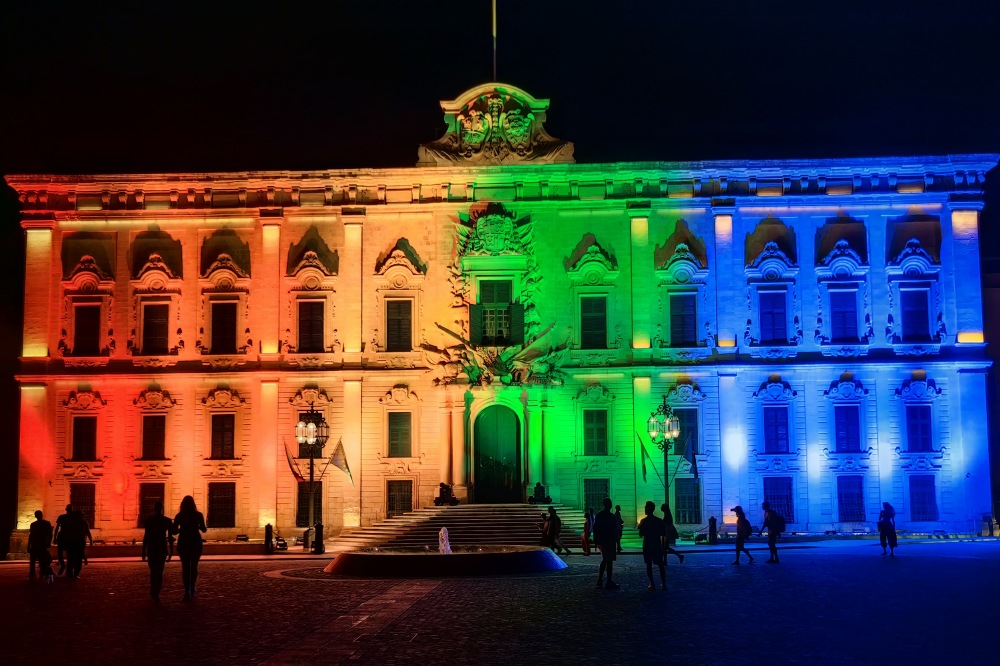
In its long history, many flags have been hoisted on the ramparts that enclose Valletta, the capital city of Malta, but none as colourful as the ones that flew from 7 to 17 September this year, heralding the annual EuroPride LGBTQ festival. With a local population of around 6.000, the Rainbow Flag fluttered over the smallest city ever to host the event since its inception in 1992, but the headcount peaked at an estimated 30.000 during the festival.
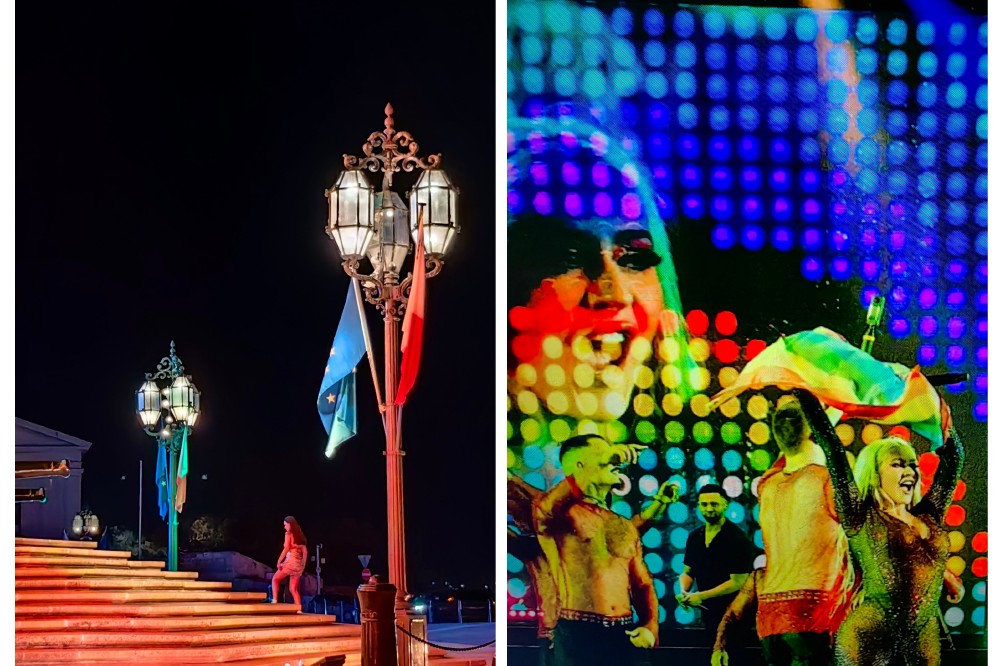
A seafaring land, Malta has seen sailors and traders passing through its ports for centuries and its history of cultural and religious tolerance is also reflected in an openness to sexual orientation. In fact, as far back as 1744, the Grand Court of Malta ruled in favour of gender fluidity, approving Rosa Mifsud’s petition to be legally recognised as a man at the age of 17 after being raised as a woman. In more modern times, Malta was one of the first European countries to recognize LGBTQ rights and this year hosted the 10-day EuroPride celebrations with an extravaganza of pride marches, concerts, and theme parties in Valletta and Gozo.
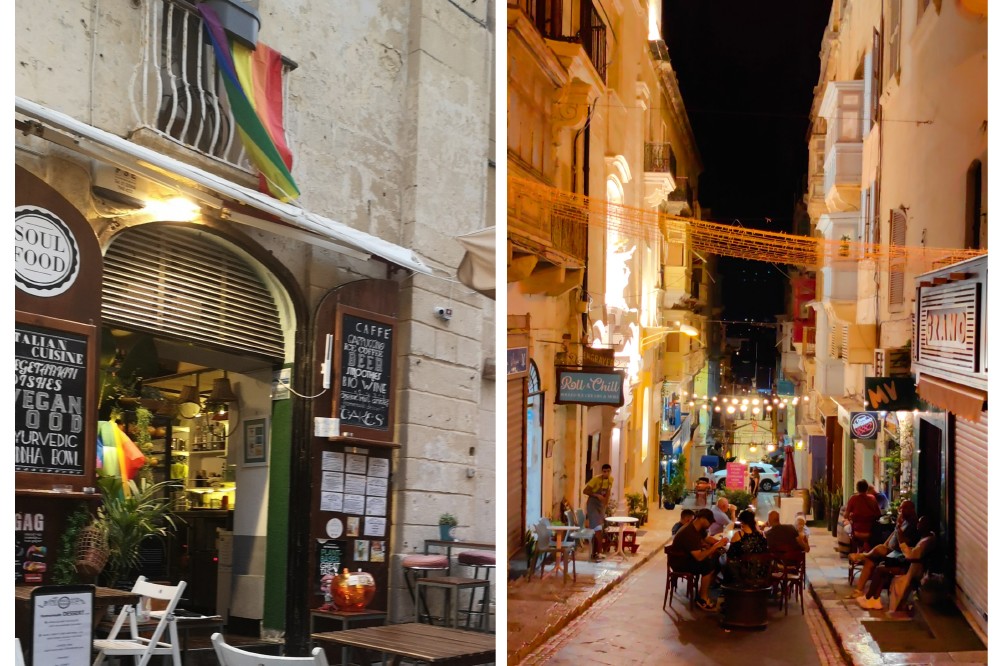
I arrived on the island mid-festival, and getting into the rainbow mood from the start, spent my first evening at Ghan Tuffieha, watching a pale-yellow sunset reflect in shimmering purples on a tranquil turquoise sea, while enjoying pink gin and strawberries from the deck of the Singita, a beach house-style restaurant clinging to the rocks just above the water’s edge. Revellers on this small stretch of sandy beach, also known as Riviera Beach, meet and mingle here from dawn to dusk.
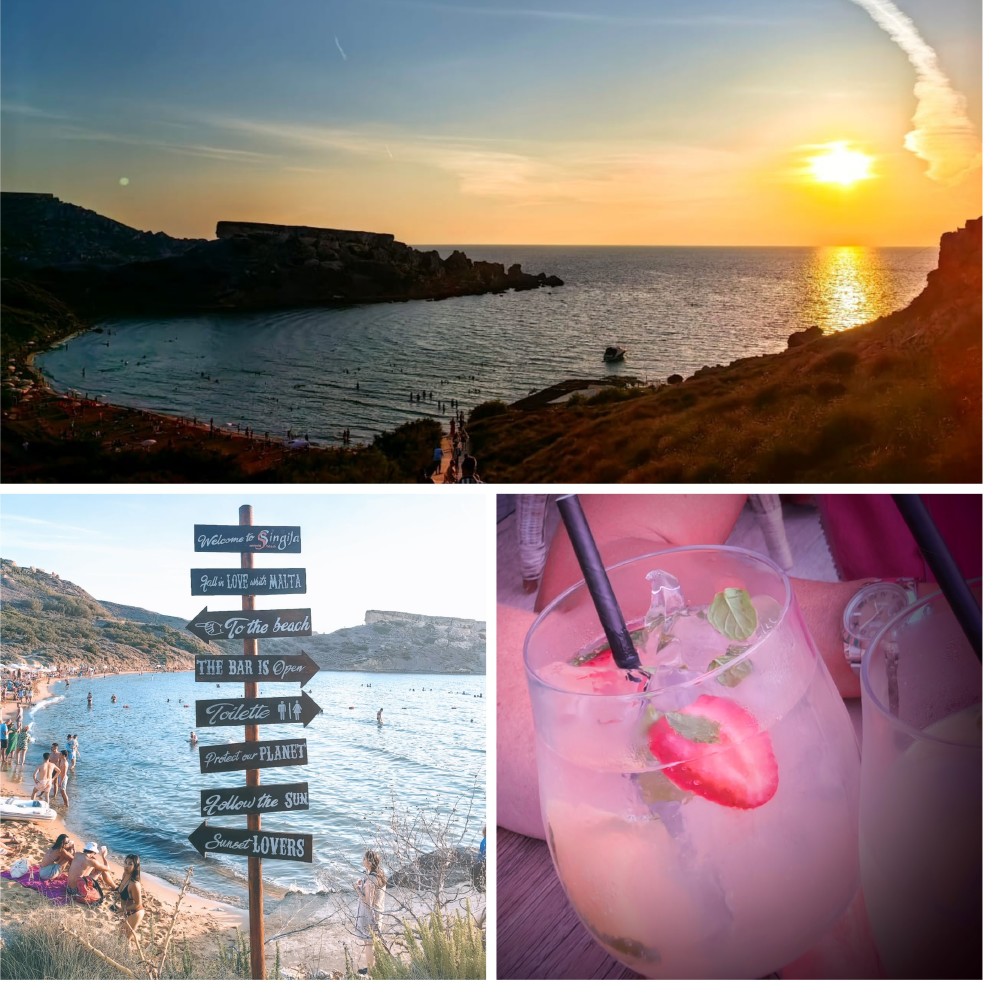
A melange of languages
Walking through the streets of cities like Valletta or Rabat, the relaxed feeling of island life blends with the steady buzz of the daily routine, amidst a colourful blend of languages, cultures and cuisines. I had an interesting conversation with the manager of a restaurant where I dropped in for a delicious local version of pasta bolognaise made with chopped corned beef – a nod to the British heritage that has left its mark on the island’s history. He explained that having been under Arab rule for around 200 years from 870 AD, the Maltese language is an engaging blend of Arabic, Italian and English and is unique in that it is the only Semitic language that uses the Roman alphabet (with a few additional consonants).
No matter what language you are speaking, though, there is one universal language which comes straight from the heart. This year the theme for EuroPride, ‘Equality from the Heart’, brought the Maltese and wider European LGBTQIA+ community and supporters together to celebrate diversity and advocate for a more inclusive world. The crowning event was a free show headlined by a most gorgeous Queen of Hearts, Christina Aguilera, and featured performances by local Maltese musicians Ira Losco and The Travellers, as well as other Mediterranean born performers.
Modern Malta
For eight consecutive years Malta has scored top marks from the Rainbow Europe Index, which is a ranking by ILGA-Europe, an organization that monitors the legal and social climate for LGBTQ communities in 49 European countries. While EuroPride drew tourists from many of these countries, following Malta’s entry into the EU in 2004, foreigners now make up about 22% of the island’s permanent population, too. The expat community in Malta tends to congregate in areas like Sliema or St Julian’s and Paceville, where classical low-rise balconied townhouses have been replaced by apartment blocks several stories high, flanked by a few conspicuous tower blocks that house apartments, suites, offices and chain hotels. In amongst the high-rises, though, one discovers unexpected pearls like the restaurant Le Majoliche, where traditional Sicilian cuisine can be enjoyed indoors or on the kerbside.
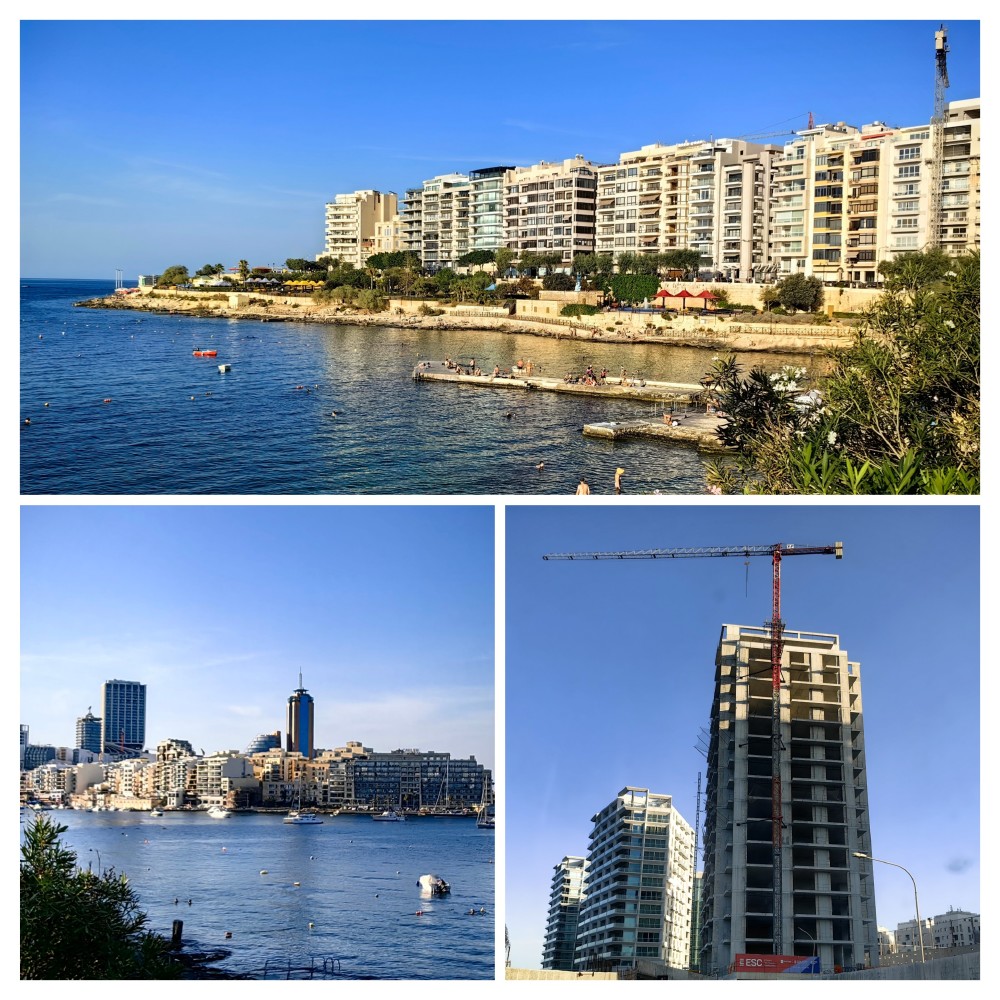
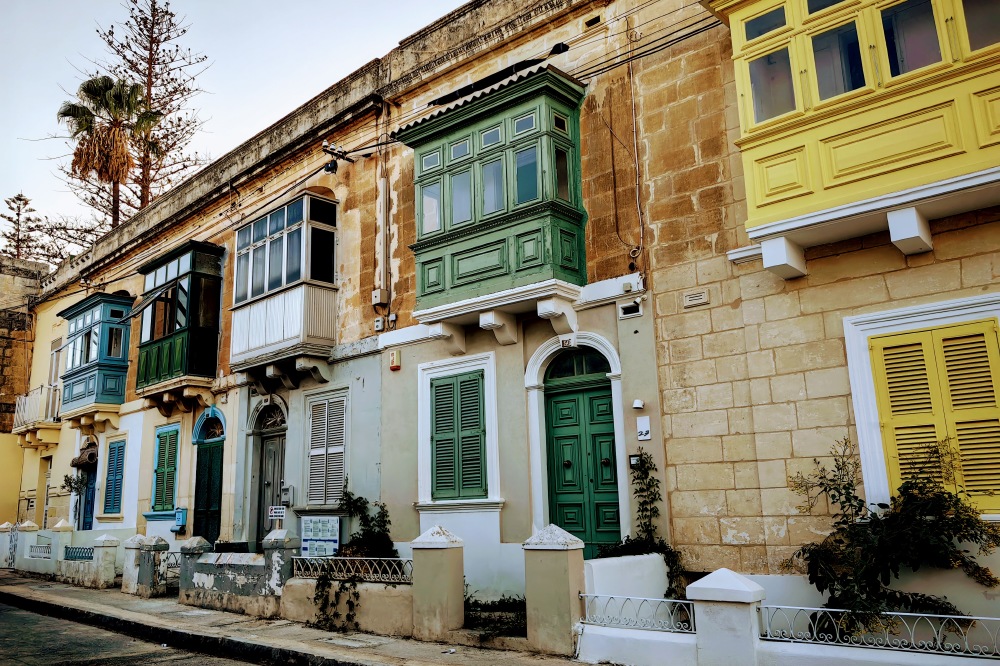
Secret Malta
A little-known gem, quite literally in the heart of the island, is the village of Zebbug. Not particularly on the tourist map, here local residents live a quiet life, keeping their dining secrets to themselves. I was lucky enough to be guided by a local friend through the unassuming side-streets with their beautifully maintained and restored homes in traditional style. Here I noticed what I was later to discover is actually a feature of the island’s architecture, namely the uniquely crafted brass door-knockers. Rounding the corner, we entered the beautifully illuminated church square in Zebbug and also came face to face with a little piece of paradise at the somewhat obscurely named Lokomotief Kafe’ where the owners, Eugenio (chef) and Francesca (service), served us a meal fit for the angels!
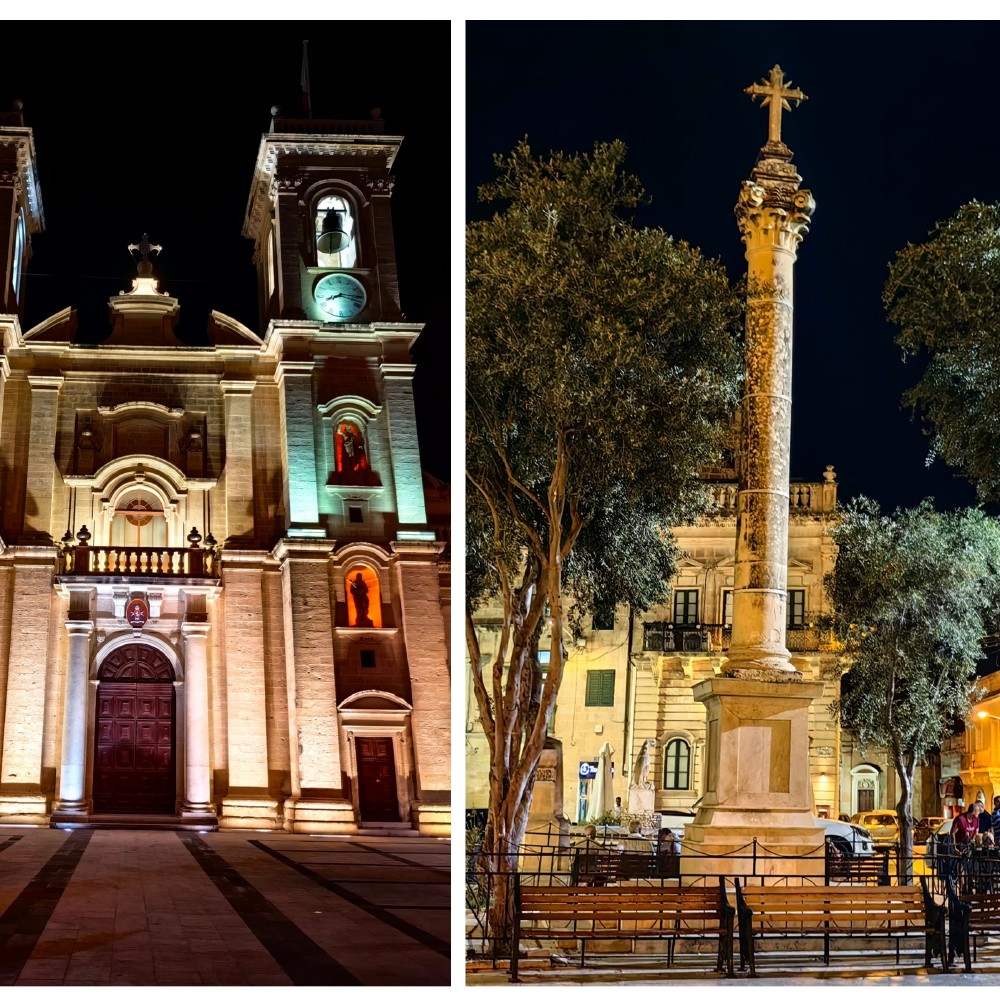
Where Queen Elizabeth waltzed the night away
Moving back to the capital city the next evening, I dropped in at the five-star Phoenicia hotel, where the Reception Manager showed me around, including a peek into the ballroom where England’s future queen and her handsome husband, Phillip, were frequent guests when he was stationed at the former British naval base in Malta. An art deco treasure, the hotel lounge is gorgeous, and the gardens leading down to the rim-edge pool with an uninterrupted view over the harbour offer a tranquil haven above the old city.
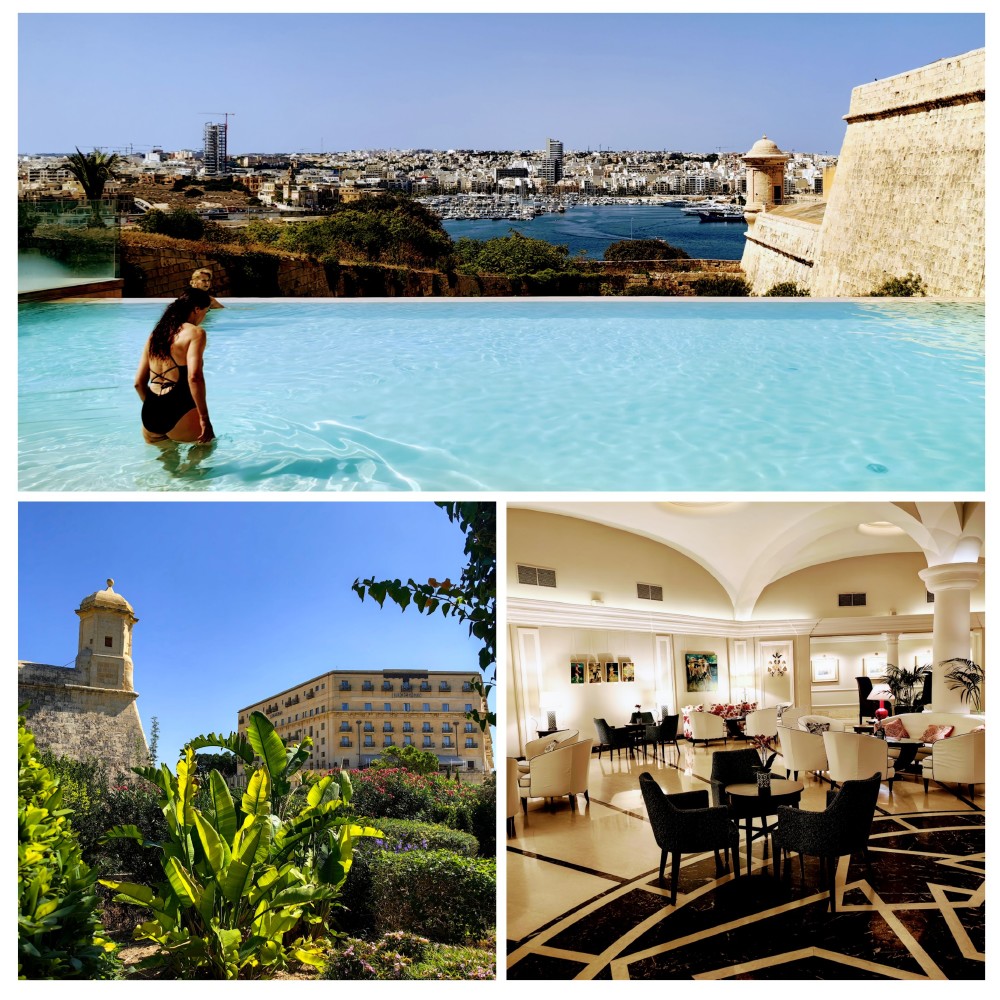
A tale of Three Cities
From the Phoenicia, we walked through the gardens of Upper Barakka and down to the harbour’s edge to board a 6-seater sailing craft known as a dghajsa, where for a mere Euro2 fee we were ferried across the waters from Valletta to Three Cities, and our journey into the 16th century was complete. Well, from an architectural point of view, at least. The massive passenger liners, multi-million Euro super-yachts and other modern sailing craft that line the ancient harbour provided an interesting contrast between past and present, then and now. We simply took in the magic of the moment as we puttered through the harbour to land at Enchante’, our enchanting dinner venue on the Senglea waterside where we enjoyed sunset cocktails and a melange of seafood and local delicacies.
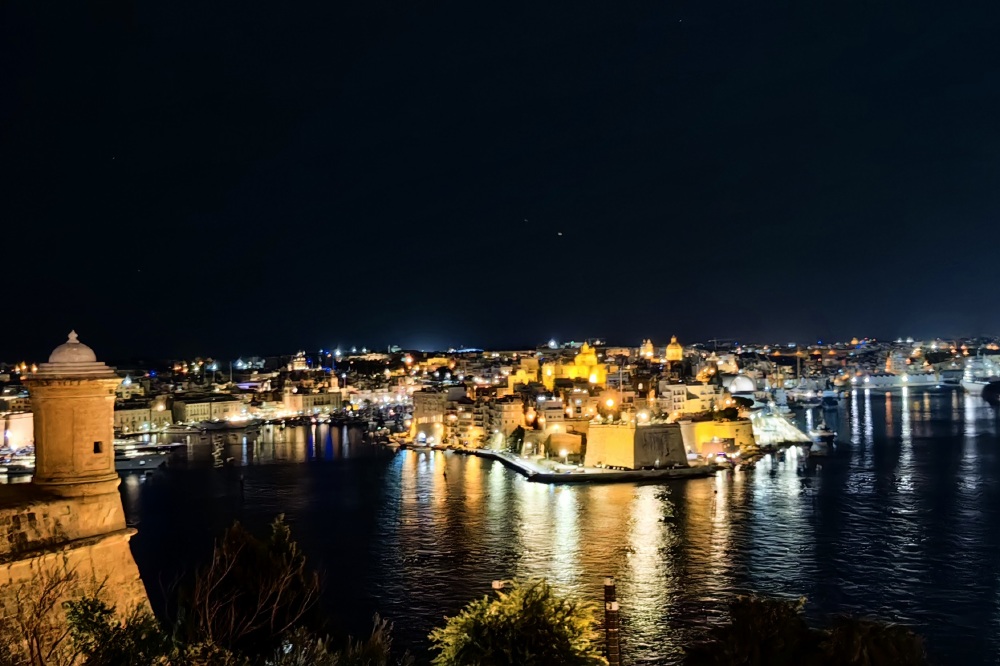
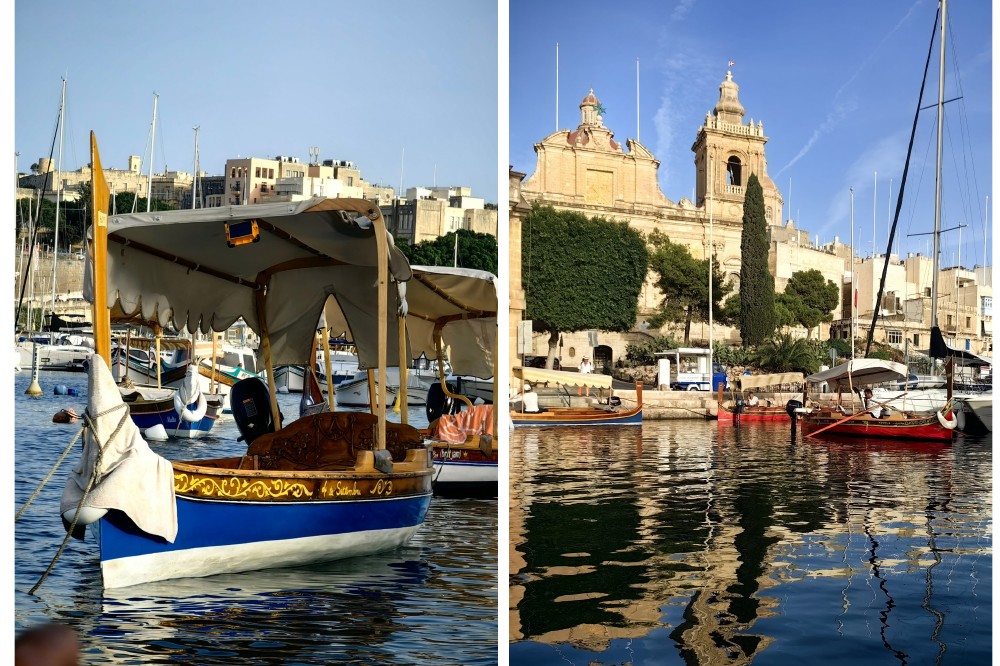
Mysterious Mdina
Valletta was not always the capital, though, and during the Arab period Malta was ruled from the fortress town of Mdina, which is perched on a hill-top in a relatively central position on the island. Best visited in the late evening when the milling crowds have gone home for the day and the residents have put up their shutters for the night, the city streets exude an eery sense of intrigue and one can well imagine the whispers of plotting politicians, or sighs of lovers meeting their suitors for secret trysts in the alcoves and hidden corners which abound. The former moat has become a grassed garden with lawns and olive trees, and one enters the city via a bridge across the green expanse below. Some of the best ice cream on the island can be enjoyed on the square outside the city gates, and the local Prickly Pear flavour is a must-try. By the way, prickly-pears which are considered a delicacy in the finest restaurants in the world, grow on Malta like weeds and are often planted specifically for their defensive nature as an impenetrable hedge, with the fruit a mere fortuitous by-product. The Maltese just don’t realise how lucky they are!
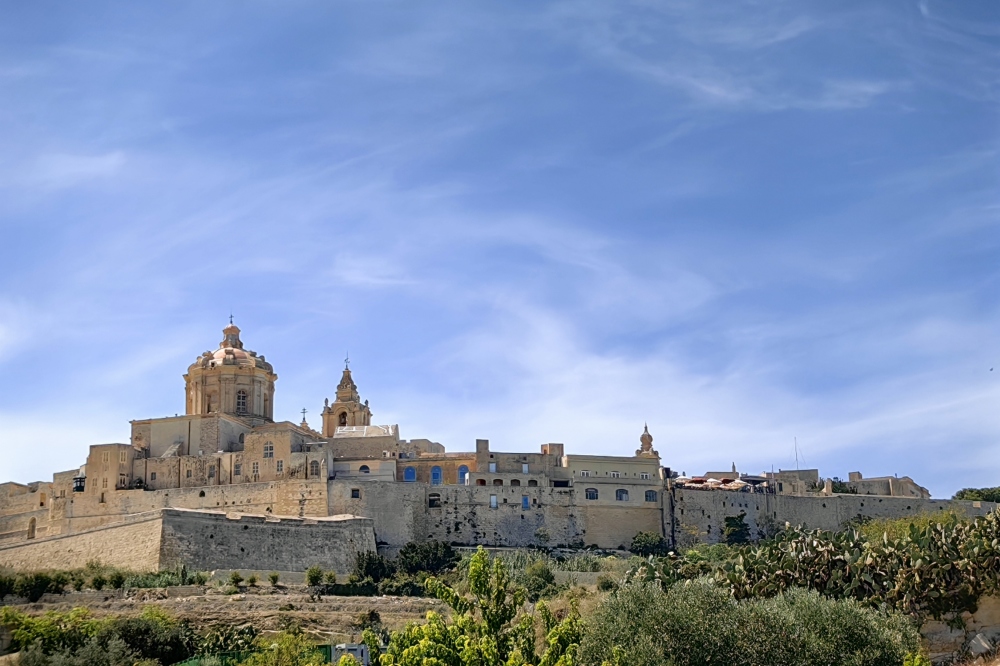
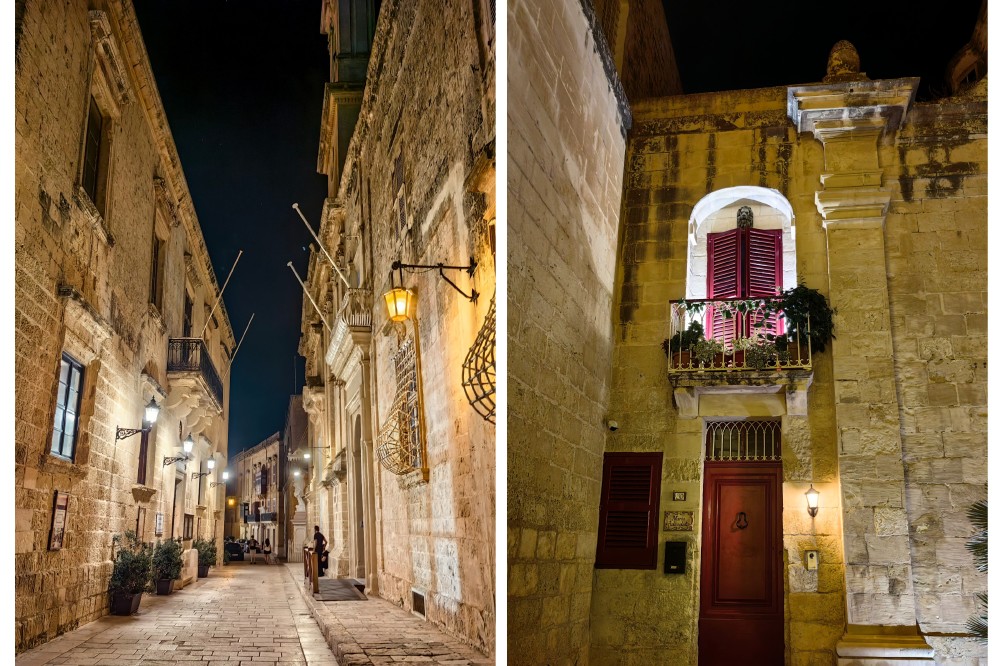
Of Watering Holes and Rock Pools
Most popular with tourists, the beaches on the northern side of the island tend to be quite crowded during the season. Travelling with a local, I was steered towards the south side of the island and to some wonderful watering holes that are less frequented by foreign visitors and more popular with Maltese residents and families. For example, Ghar Lapsi rock pool, with its clear, luke-warm waters, and secluded ledges offers a delightful bathing experience. At the nearby Dive Inn Café, which also had hoisted a rainbow flag for the festival, tables are placed amongst fishing and diving boats and the glide track for the boats run through the middle of the seating area – it doesn’t get more authentic than this. Other swimming and diving sites in the area include Pretty Bay, Il-Kalanka, and St. Peter’s Pool. Close-up the water is crystal clear, turquoise from afar, and a refreshingly pleasant temperature of around 24 degrees in September. Be careful, though, as summers can at times see the waters fill with ‘jellies’, the floating, balloon-like jelly-fish which are lovely to look at but painful to touch.
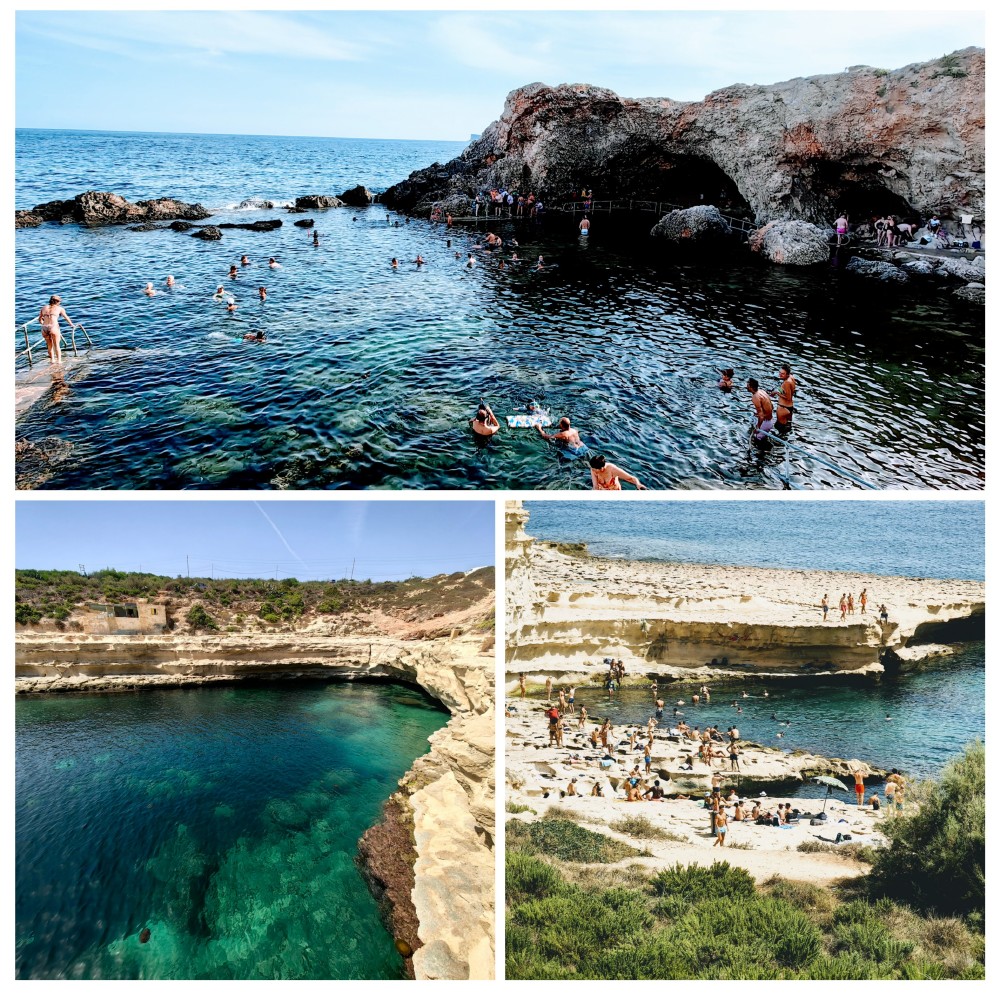
Fishing for your dinner
Amazing underwater caves and rock formations, diverse natural reefs, and several dive wrecks forming artificial reefs teeming with Mediterranean marine life all make for fascinating diving in Maltese waters. However, for those of us whose interest in marine life is more geared towards the culinary than the adventurous, the fishing boats that depart daily from Marsaxlokk and return with delicious hauls of octopus, crabs, shrimp, lobsters, bass, stone fish, tuna, white bream and red mullet, are the main attraction. In this picturesque fishing village, you can shop at harbourside markets for trinkets and local specialties, buy fresh seafood by the bucketful to prepare at home, or take a seat and enjoy Aljotta, the local fish soup served with chunks of home-baked bread.
Where past, present and future converge
Continuing the pilgrimage on the south side of the island, I found myself at the place where the ancient inhabitants came to make obeisance to the Sacred Feminine at the Hagar Qim and Mnajdra megalithic temples. Built more than 1.000 years before the pyramids and located on an isolated stretch of the shoreline, a visit to these monumental pre-historic sites, carefully excavated and partially reconstructed, provides a provocative glimpse into what remains a largely mysterious era in the island’s history of human habitation. I like to imagine that I walked in the footsteps of the pilgrims who came to visit these sacred sites, baring their souls to the Goddess (?) and leaving feeling lightened and blessed. Perhaps the openness to gender identity that prevails on Malta today has its roots right here, as there is even a question around the gender of the Being that was the object of worship – stone figurines in varying sizes from very small to human sized seem to be female given their breasts and curves, but could also be curvaceous or corpulent male figures, in crouched positions. As archaeologists continue to muse over the origins of the people who built these temples and the objects of their worship, we wander amongst the rocks and down to the pools with a sense of awe and wonder, content that a multigendered deity fits our world today just as well as it did 5.000 years ago.
Stone walls abound on the island, carefully built in the traditional way, without cement to keep them in place. The oldest stone walls are those that remain from the megalithic temples and are retained under protective tarpaulin coverings. These UNESCO world heritage sites continue to confound science, whilst leaving visitors with a sense of tranquillity and awe.

